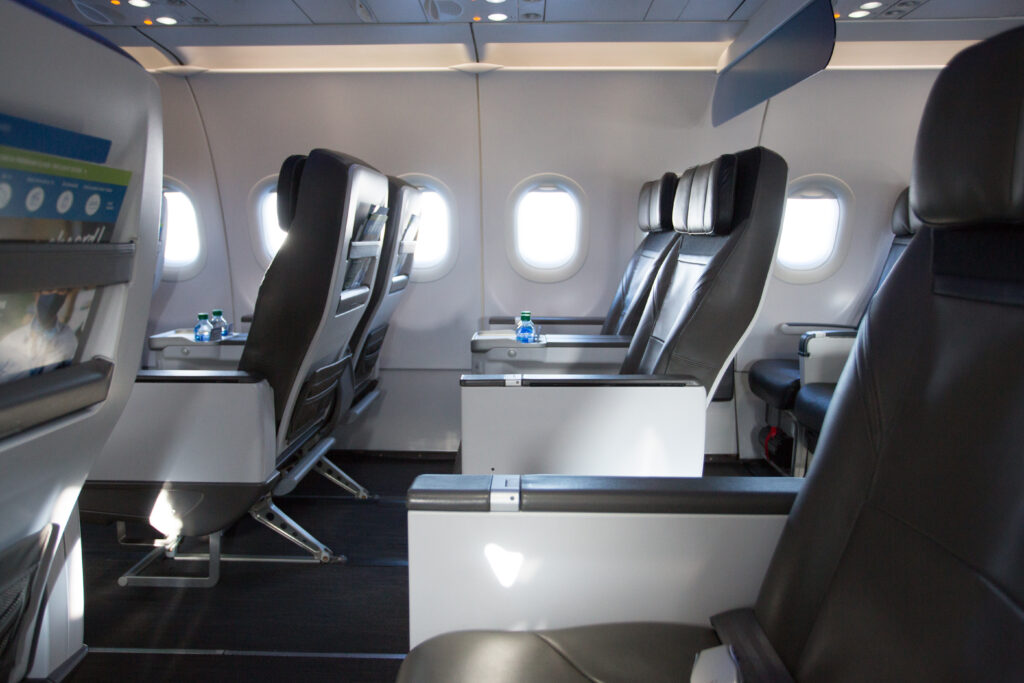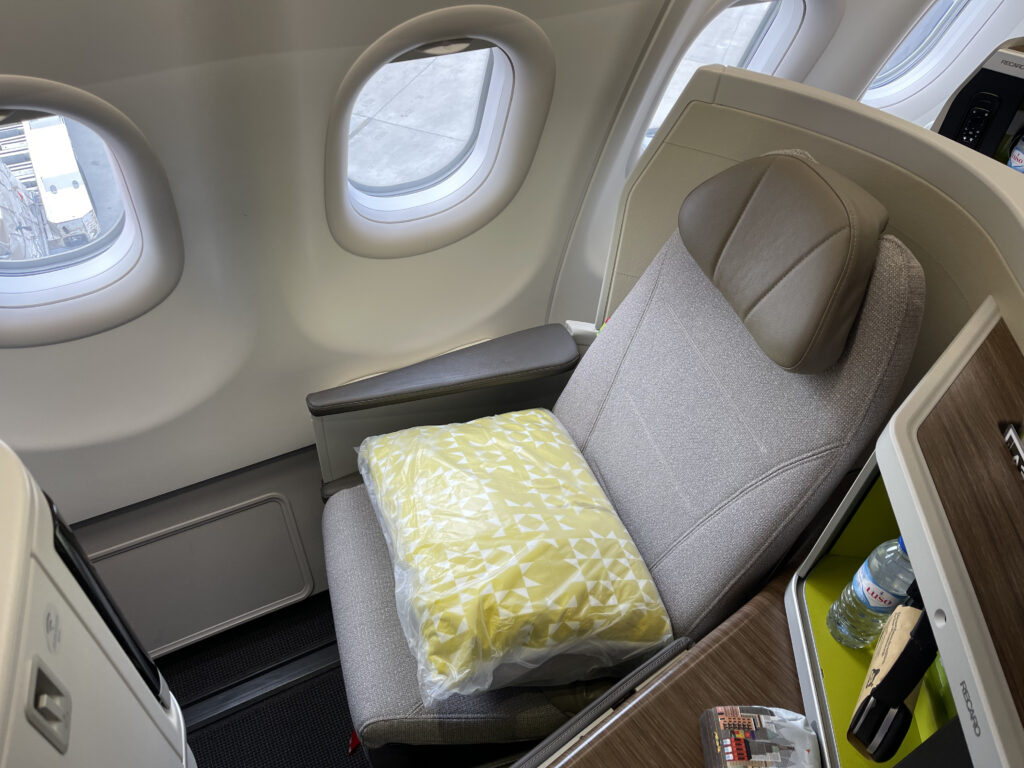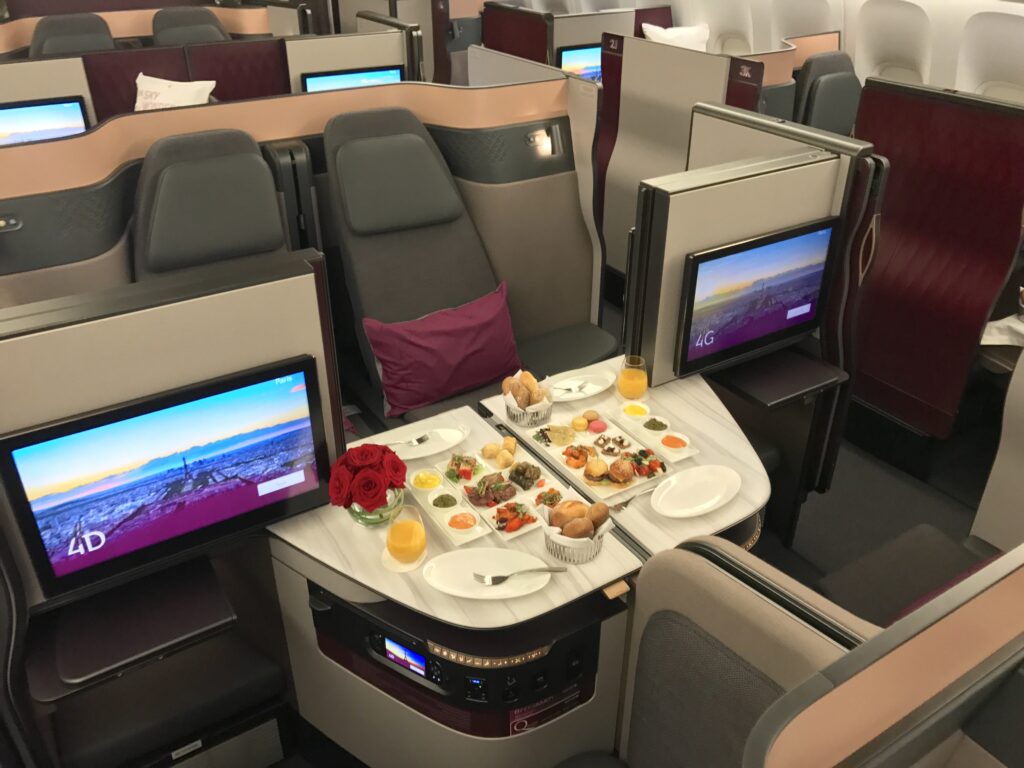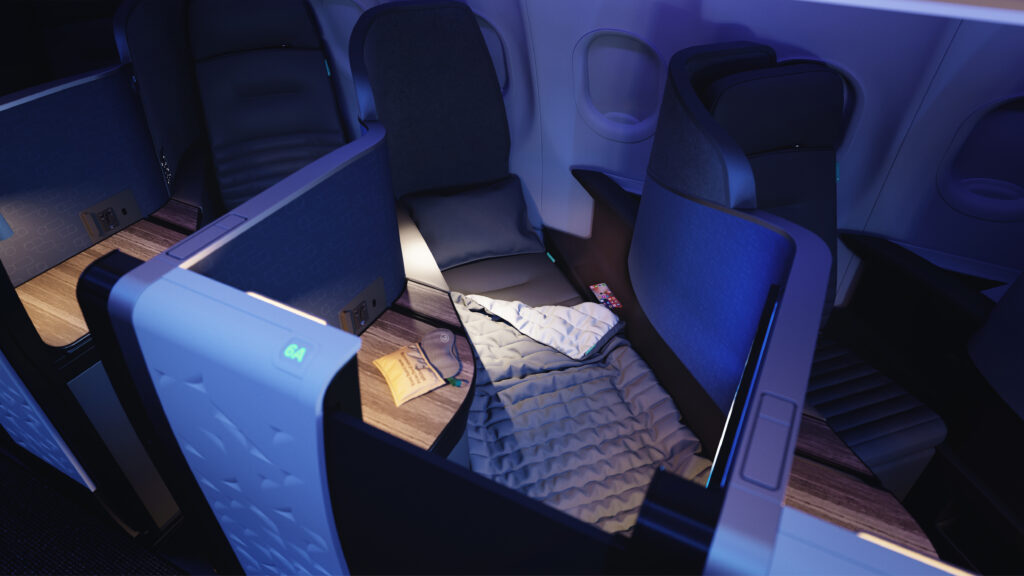 As aviation in much of the world begins to accelerate out of the pandemic effects of COVID-19, the business class seating landscape has changed substantially, with new products released since 2019 now becoming dominant.
As aviation in much of the world begins to accelerate out of the pandemic effects of COVID-19, the business class seating landscape has changed substantially, with new products released since 2019 now becoming dominant.
The new longhaul narrowbody revolution, too, is bringing new products to bear, so to summarise and categorise the industry’s products, RGN has identified a full 14 different kinds of business class seats.
Seats and recliners
There are five principal types of business class seat that don’t go flat, two of which use regular economy seats and three of which are larger, recliner-style products.
Eurobusiness seats are the norm within, as the name would suggest, Europe. They’re regular economy seats at the front of the plane, with the middle seat of three or the neighbour seat of two blocked off.
Most, but not all, airlines offer a few inches of extra pitch compared with economy. On some airlines, these remain the same model as is found throughout the entire rest of what’s usually a Boeing 737 or Airbus A320 family aircraft.
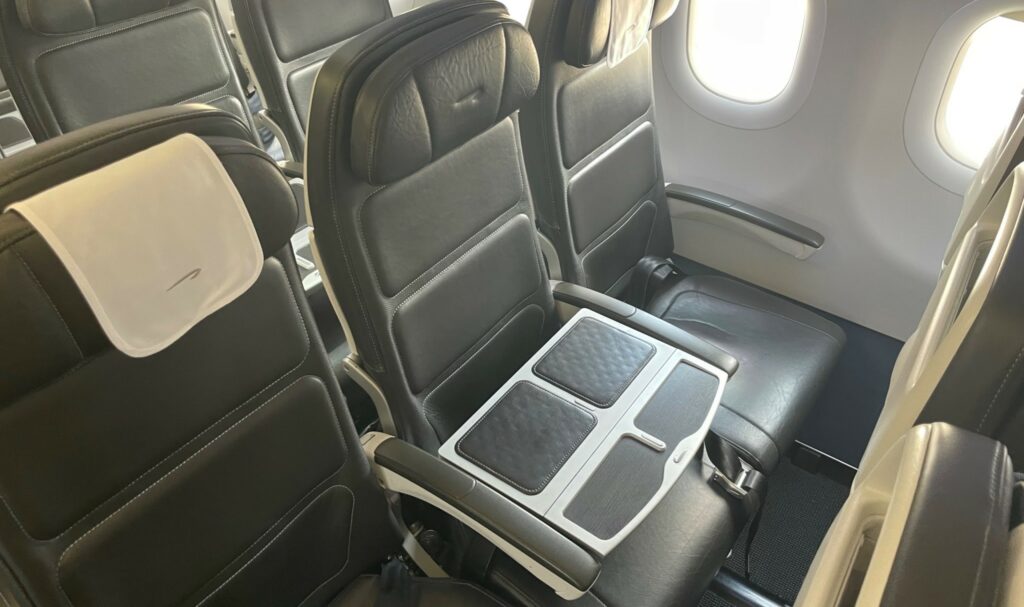
Like many European airlines, British Airways’ Club Europe seats are the same as economy seats, but with the central seat used as a divider. Image: Fintan Horan-Stear
On a growing number of carriers, though, it’s a hybrid model: more fully featured economy class seats up front than found at the back of the aircraft, with a more ergonomic seat model, movable headrests, more or upgraded power sockets (AC in addition to USB, say), and so on.
Eurobusiness minus is just that: European business class soft product, but without the blocked neighbour seat, which some airlines offer on board aircraft with pairs of two seats on one or both sides of the aisle.
Recliner seats are standard in shorthaul business class outside Europe, and in domestic first class within North America.
These types of seats are also installed in longhaul premium economy on many carriers, or in some low-cost carriers as a budget business cabin. They are larger, and pitched upwards of 35 inches. Most are within the 35-37” seat pitch range, though a few offer 38 or more inches.
Recliner plus is a new category, and comprises seats that offer a different functionality, arrangement, ergonomics, space, privacy or other amenities when compared with regular recliners. This might be the Collins Air Rest style of fixed seatback lazy-Z seat, the slightly staggered HAECO Eclipse, or Factorydesign’s new Access Z-bed, which offers direct aisle access but not a flat bed.
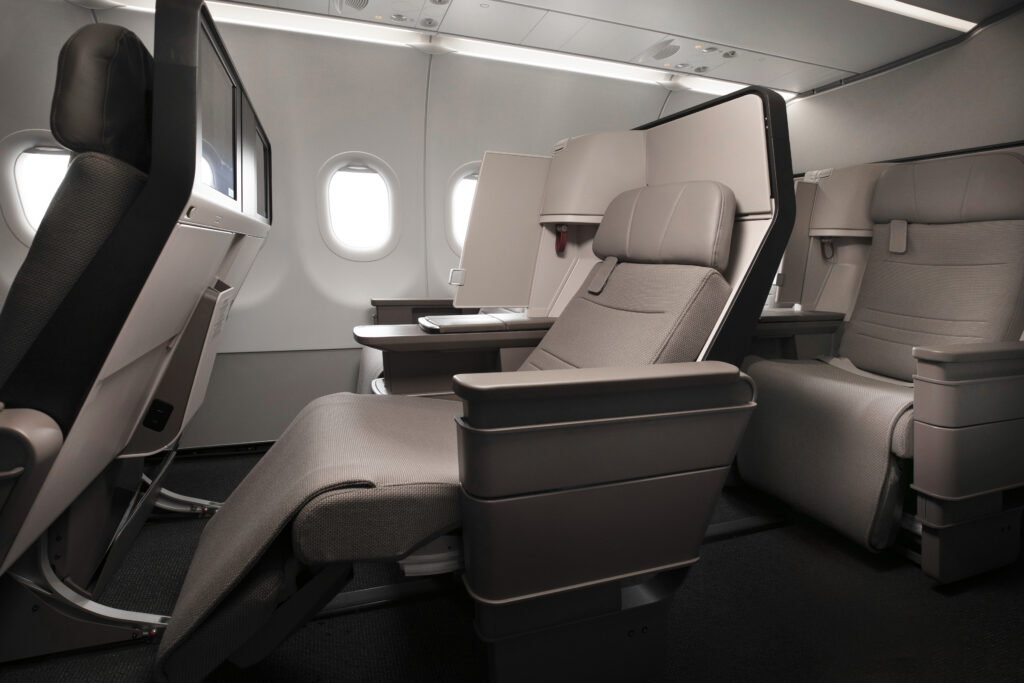
Collins’ Air Rest is nipping at the heels of flatbed business in terms of regional comfort. Image: Cathay Pacific
Cradle sleeper seats, meanwhile, are on the way out almost everywhere, but where they remain they offer more space than recliners, with greater pitch, more recline and a legrest to create a kind of La-Z-Boy effect.
Flat beds without direct aisle access
The business class standard in the 2000s, flat beds that don’t offer direct aisle access for every passenger are by and large now found on shorthaul business class, budget or leisure carriers, and other airlines that don’t or can’t lay claim to being at the forefront of the passenger experience.
Angled lie flat seats, where the seat reclines to a mostly flat surface but is not parallel to the floor, have mostly disappeared. A few older regional and LCC configurations retain them, but few if any are being newly installed.
Fully flat seats without direct aisle access for every passenger are at this point mainly found on older aircraft, as well as new longhaul or premium narrowbody services.
Key current fully flat products on narrowbodies include the slightly offset Collins Diamond seat as seen on La Compagnie, the 1-2 staggered Thompson’s Vantage as seen on SAS’s A321LRs (where direct aisle access is only in the “throne” seats), and Stelia’s V-angled “footsie” style Elysium as seen on China Airlines.
Seats and mini-suites with aisle access
Two (and a half) are staggered, with the enclosed footwell box of one passenger serving as the side console table of another, and three (and a half) are arranged on an angle away from the aircraft’s centreline.
Doors are the spoiler here: from compact staggered seats through to outward and mixed herringbones, adding privacy to create a mini-suite is one of the stories of this decade.
Compact staggered seats are at present, and likely will be for the rest of the decade, the entry level business class product. In many cases, they’re replacing older angled lie-flat or early fully flat options.
Featuring less pitch and often fewer amenities than their more premium counterparts, they include Safran’s Optima, Stelia’s Opal and Recaro’s CL3710.
Premium staggered products, meanwhile, offer more space, but still have the zero sum problem of the stagger: some seats on the aircraft are notably worse than others. Think Stelia’s Solstys, the Thompson Vantage XL, and so on.
Inward-facing herringbone seats are arranged at an angle away from the aircraft centreline, inwards towards the aisles, with the feet of one passenger overlapping with the head of another inside an enclosed footwell. These started off in business with the original Virgin Atlantic Upper Class suite in 2003 (now nearly 20 years old and still flying), which flipped over to provide a different sleeping surface to that when seated.
All other products, from the Contour product that was the subject of the now-infamous Virgin v Contour ruling to the newest Thompson Solo suites on JetBlue recline to flat.
Outward-facing herringbone layouts, by contrast, face away from the aisles towards either the window or the centre of the aircraft. Many passengers prefer these because they feel more private.
They include the Cirrus seat from Safran, previously Zodiac and previously Sicma, all the way through Stelia’s new Opera product.
Mixed herringbone products combine either inward and outward herringbone seats, like Virgin Atlantic’s A350, or a forwards-backwards layout like the Safran Concept D that American Airlines eventually cancelled.
Semi-herringbone seats are quite rare, and combine stagger and herringbone principles. One key example here is Singapore Airlines’ Airbus A350 product, where the seating faces forwards but passengers sleep at a herringbone angle. Another is the inverted version of this, the ANA implementation of the Safran Fusio seat, where passengers overlap at foot level.
Sofa seat products, meanwhile, are the newest kid on the block: rather than reclining in one position from seat to bed, these products — like Collins’ AirLounge on Finnair — allow passengers to curl up in a variety of ways before stretching out to sleep.
Related Articles:
- Ranking 2019’s best business class seats
- The 19 different kinds of aircraft seating in 2014
- A premium for business class seats: the narrowbody dilemma
- How aviation can innovate into the business class travel space
- The zero-sum problem with staggered business class seating
Featured image credited to Finnair



